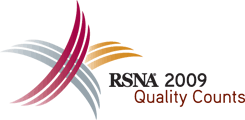
Abstract Archives of the RSNA, 2009
SSA05-06
Evidence-based Validation of the Predictive Value of AAST Kidney Injury Scale: Which Renal Injury Will Heal Satisfactorily with Nonsurgical Management?
Scientific Papers
Presented on November 29, 2009
Presented as part of SSA05: Emergency Radiology (Thoracoabdominal Trauma)
Abhishek Mahajan MD, Presenter: Nothing to Disclose
Sripathi Smiti MBBS, DNB, Abstract Co-Author: Nothing to Disclose
K. Prakashini MBBS, MD, Abstract Co-Author: Nothing to Disclose
Rajgopal Kv MBBS, MD, Abstract Co-Author: Nothing to Disclose
Arun Chawla MBBS, MS, Abstract Co-Author: Nothing to Disclose
V.R.K. Rao MD, Abstract Co-Author: Nothing to Disclose
Meenakshi H. Thakur MD, Abstract Co-Author: Nothing to Disclose
•Evidence based validation of the predictive value of AAST kidney injury scale in therapy planning & outcome.
•To redefine the criterion's for nonoperative management (NOM).
The Trauma Registry was reviewed from May, 2001 to May, 2008 to identify patients with renal injury. Patient charts were reviewed to determine sex, age, mechanism of injury, vitals, imaging, associated injuries, and management and outcomes.All patients were evaluated with CT scanning. Injuries were graded according to AAST Grading System. Statistical "classification trees" were used to determine factors predicting need for surgical repair.
During the study period 3980 consecutive trauma cases were seen at Kasturba hospital, of which 66 (1.6%) had renal injuries: blunt in 93.9% and penetrating in 6.1%. Among patients with BRT, 21% were grade I, 24.2% grade II, 11.3% grade III, 25.8% grade IV, & 17.7% grade V renal injuries. In this population, 54% had associated trauma and 48(84%) had gross hematuria. 58 (93.5%) cases had complete recovery & successful outcome. NOM management was undertaken in 56 (90%) cases & the success rate was 89%. NOM was successfully applied to all patients with 100% of grade I, 93% of grade II, 100% of grade III, 63% of grade IV, & 55% of grade V renal injuries. Although grades IV & V injuries composed 42 % of the series, they represented 91% of the patients requiring operative intervention. Immediate Surgery was required in 6 patients & was mainly predicted by the AAST [odds ratio 21.4, 95% CI 2.7 – 119.7], proving AAST injury severity scale to be a powerful & valid tool for prediction of clinical outcome in patients with renal trauma. Of all the other criterion's assessed, pelvicalyceal system (PCS) involvement showed the maximum risk for need for surgery & was seen to be 70 folds (OR 68.9, 95% CI 6.9 -676.8).
CT evaluation with AAST injury scoring provides a highly sensitive & accurate method to make a confident choice of treatment in patients with BRT. We recommend that the physician must have a heightened awareness of probable complications & need for surgery in patients with Active bleeding, Peritoneal violation and Violation of the collecting system.
NOM of serious renal injuries has been advocated and yet to our knowledge the optimum level of NOM has not been established to date.
Mahajan, A,
Smiti, S,
Prakashini, K,
Kv, R,
Chawla, A,
Rao, V,
Thakur, M,
Evidence-based Validation of the Predictive Value of AAST Kidney Injury Scale: Which Renal Injury Will Heal Satisfactorily with Nonsurgical Management?. Radiological Society of North America 2009 Scientific Assembly and Annual Meeting, November 29 - December 4, 2009 ,Chicago IL.
http://archive.rsna.org/2009/8000054.html

